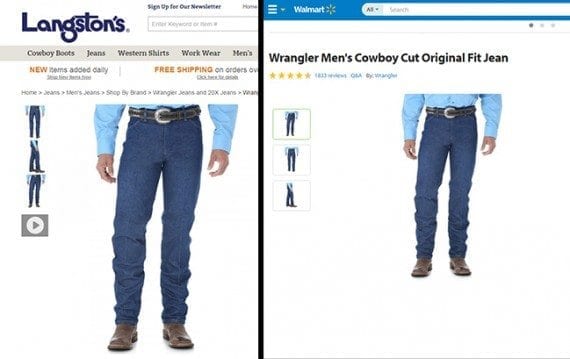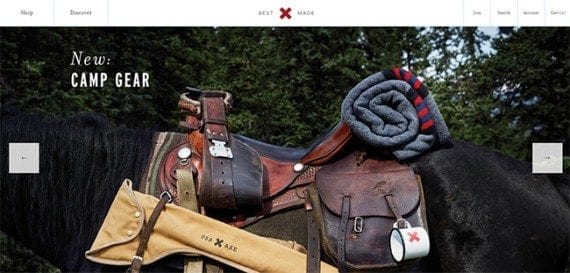What is a picture worth, in dollars and cents? Online retailers need product photography, relevant product lifestyle images, and even stock photos (for blog posts and social media). All of these images come at a cost, but just how much should an ecommerce business pay?
The answer to this question — how much to pay for a photo? — is surprisingly complex. It depends on things like the subject matter, the difficulty of taking the shot, the cost of models and crew, the exclusivity of the image, how the image will be used, and more.
In the end, a photograph is worth what your business is willing to pay for it. What follows are suggestions for how to think about a photo’s value.
Product Photography
For an online retailer, product photography is money. Product photos sell your items. Without them, most shoppers are not going to make a purchase. Ecommerce businesses usually have a few options for securing product photos:
- Get images from a supplier;
- Take photos internally;
- Hire a photographer;
- Hire an agency.
Get images from a supplier: Free. If your online business sells products that someone else makes, you may be able to get product photos from your supplier for free. Typically, vendor-supplied product photos will be good quality, but they will often not show a model’s face (that costs more) and they will be the same product images that will appear on other websites.

Vendor-supplied product images are typically free. They are also free to your competitors.
Take photos internally: Less than $500 plus time. If your business sells unique products or if your suppliers cannot provide satisfactory product pictures, you can take photos yourself.
With surprisingly little equipment — digital camera, lights, tripod, and similar — almost anyone can learn to take good product pictures. It is not easy, but it is manageable. Once you have paid for the equipment, the only incremental costs are time and materials. You can typically get the basic equipment for less than $500.
Hire a photographer: $10 per product image. One of a small or mid-sized ecommerce business’s best options may be to hire a freelance photographer to take product photos. Depending on your location, the photographer’s experience, and whether or not you provide the studio space and lighting, a freelance photographer could cost as little as $25 per hour and as much as $250 per hour.
If you assume $50 per hour for a photographer working at your location, it is not unreasonable to capture and process five product images an hour. Thus, the average cost per product image would be $10. That is a pretty good deal for pictures that make you money.
Hire an agency: $25 per product image. There are many agencies and service providers that will take product images for your business. These agencies will work at their own studios, use high-end lighting systems, and take amazingly good product pictures.

A professional looking product image is often worth the investment.
Often these services will charge per image, with added charges for a transparent background, “ghost mannequins” for apparel pictures, and hand modeling — yes, hand modeling is a real thing.
If you purchase lots of 100 or more product photos, expect to pay about $25 per shot. Smaller batches will cost more on a per-picture basis. So, if you are after just 10 pictures, it might cost you $50 each.
You will also need to transport the products to and from your agency.
Lifestyle Photography
A “lifestyle” photograph captures people using your products in a real-life situation or at least a marketer’s version of real life. In ecommerce, these images are often used as page headers, category graphics, supplementary product images, or content for advertising.
Not surprisingly, online merchants have the same four options for capturing product lifestyle images.
- Get images from a supplier: Free.
- Take photos internally: Time and gear.
- Freelance photographer: $150 per image.
- Photography agency: $500 per image.
Many manufacturers and distributors will have lifestyle images for your business to use for free. You can also take your own lifestyle pictures, which is, again, an investment of your time. Lifestyle pictures are relatively more difficult to capture than isolated product pictures. Do not be surprised if your first few attempts fail.
Professional photographers will produce much better outcomes, but remember that the photographers are not your only expense. There will be models, makeup specialists, hair stylists, and crewmembers. You or your agency may need to secure the location and the props, too.

This lifestyle image shows Best Made products in a “real-life” situation. To get this shot, Best Made needed more than just a photographer — it needed a horse.
On a recent photo shoot with a photographer, a makeup and hair stylist in one, and a crew of five, I was able to capture 33 lifestyle images for $5,000 — about $150 per finished image.
If you add an agency, which will include creative direction, you will likely pay more.
Stock Photography
There will be plenty of times when an ecommerce business needs to use stock photography, be it for a blog post, a social media post, or an ad. For many uses, it is possible to get commercially licensed stock photos for free. Contributing Editor Sig Ueland assembled a list of “14 Sites for Free Stock Photos” here on Practical Ecommerce. These sites are certainly a good place to start.
If you do need to buy a stock image, expect to pay between $12 and $40 for a high-resolution, professional-looking, royalty-free image. It can be a lot less expensive to subscribe to a service, which can bring down the average cost for a stock image to as little as a dollar or two.




